Christian Streich has been in charge of Freiburg for over 11 years. During that time, he’s led the side to three separate UEFA Europa League competitions, and is currently on track for another top-four finish, ahead of the likes of RB Leipzig and Eintracht Frankfurt.
After 25 league games, however, they have only scored 38 goals, which is fewer than any other side in the top 11 of the Bundesliga. Although they have been getting points on the board, goals haven’t come easily for them and one way in which they have made up for the lack of chances created is by being effective during dead ball situations.
In this tactical analysis, we will delve into the tactics used by Freiburg, with an in-depth analysis of how they have been able to use a number of different routines to create numerous high-quality goal-scoring chances. This set-piece analysis will look at the reasons behind the different routines used and why they have been so effective.
Targeting the near post
Freiburg’s primary method of creating chances from corners has been through delivering flat crosses towards the near side of the six-yard box, where the attackers are able to make contact with the ball without any pressure from defenders. With this routine, a Freiburg player will attack the target area from deep in order to arrive in the target area as the ball is crossed in. Timing is crucial when attempting this, as an early run could attract a defender to the target area who then gets the opportunity to compete for the ball while a late run would also be unlikely to succeed, with the attacking player not being able to attack the ball in the desired area.
The run from deep also has two variations. In the example below, we can see the Freiburg attacker making the run from the other end of the six-yard box, being in a deep horizontal position relating to the ball. The player and ball are close in terms of distance from the end line. However, being on either side of the pitch means that it becomes impossible for defenders to keep their eyes on both the ball and the player simultaneously. The attacker can make a run from the defender’s blind side, meaning that they won’t be able to track the offensive run.
This is also rare from open play, due to the risk of being offside when the ball is in deeper areas of the pitch. It is more common to see deep runs from a vertical point of view, in relation to the goal, where the player starts outside the box and runs towards the goal. With this method, a player can attack the goal with speed, making it easier for them to redirect a shot on goal with added power although defenders have a higher chance of tracking and blocking the run.
Both methods allow for players to attack open spaces without occupying those spaces originally but the ability to have a consistent method of making the first contact makes the horizontal movement a more viable option for Freiburg.
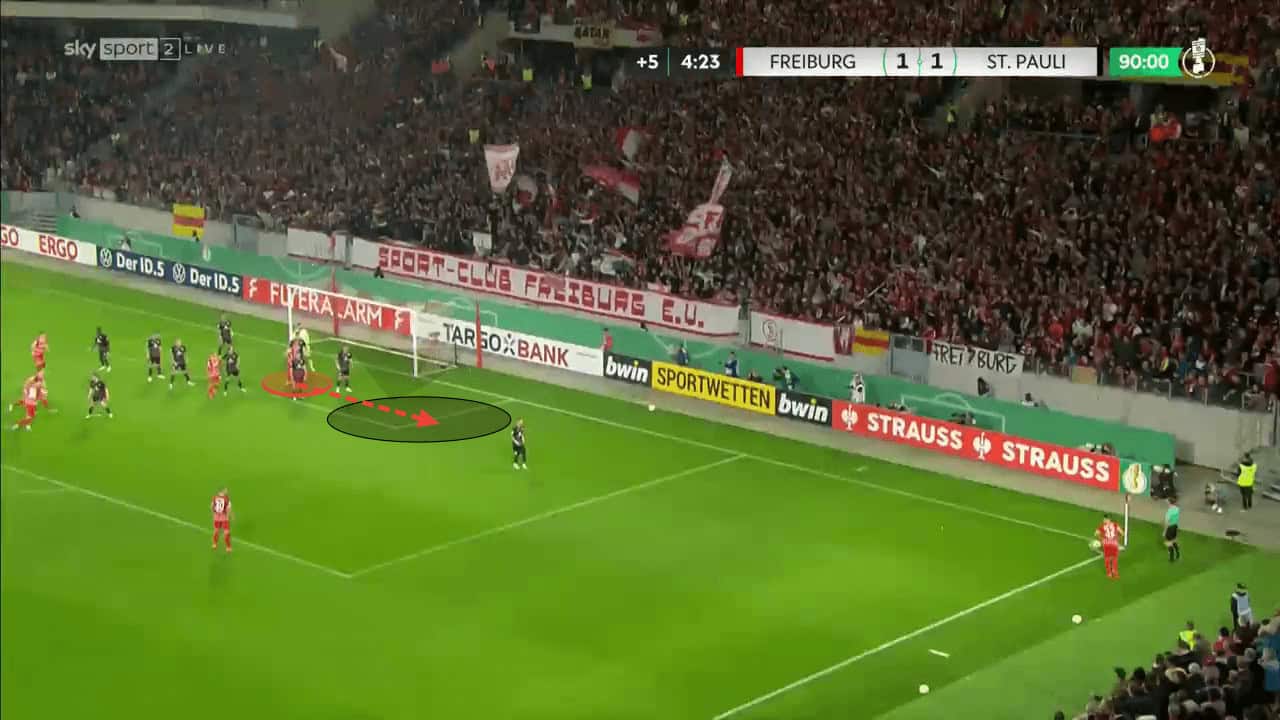
On certain occasions, defensive teams are more prepared for the deep horizontal run. We can see in the image below, the defender keeping an open body shape to be able to see both ball and player. Freiburg have shown the numerous ways in which they are able to combat this. Firstly, if a defender keeps the side-on shape, a sprint from an attacker will be enough to gain the separation needed to make the first contact. As a result, the defender needs to turn and sprint towards the near side of the six-yard box.
Freiburg have utilised a smart use of body feints when making the deep run, in order to force the defender to turn their back to an attacker before being able to alter the direction of the run to find the free space. We can see in the example below, the run starts off straight to the near side of the six-yard box before a sharp turn to the side is made.
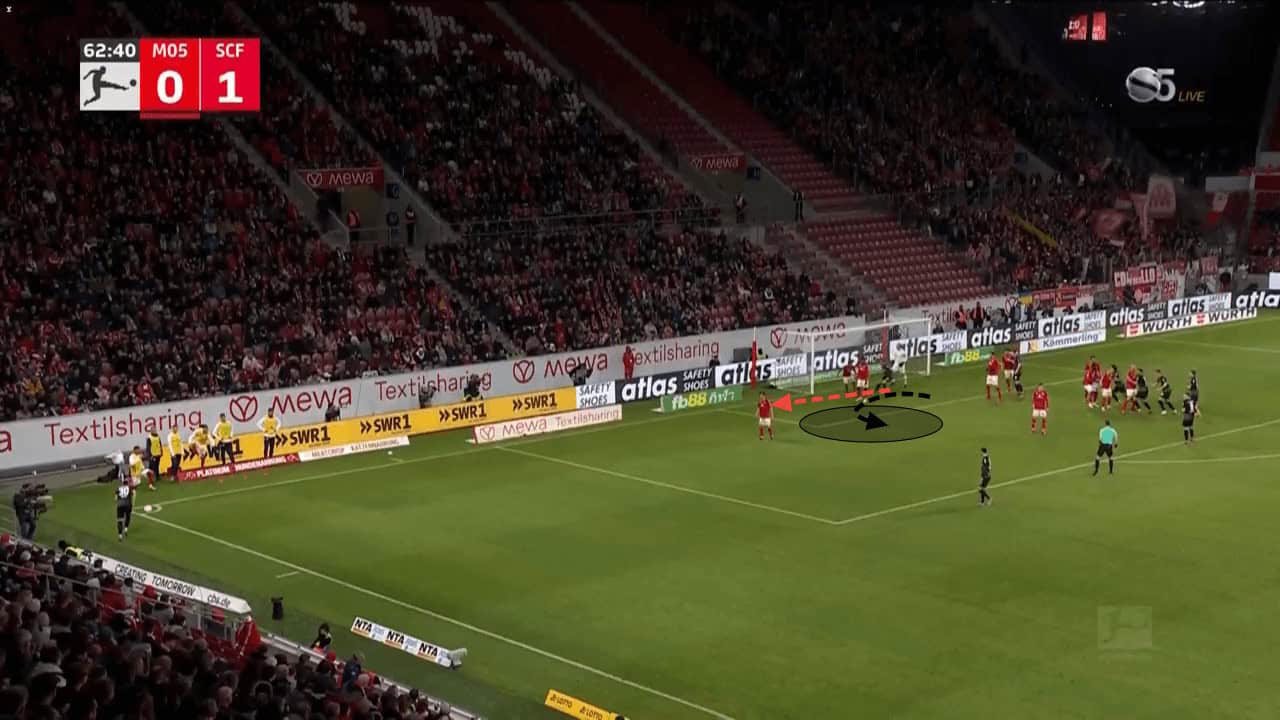
One other way in which Freiburg have created the necessary space around the front part of the six-yard box, is through the use of screens to prevent defenders from coming out to clear the ball. Usually, screens are more effective in slightly deeper areas away from the goal where a static defender can’t keep up with an attacker making a sharp run. However, in this case, as the players start close to the goal, there is no sharp run towards goal. In these scenarios, attackers have to be able to screen multiple defenders at the same time.
One way in which you would be able to screen two defenders at once is by manipulating their positions in order to be as close to each other as possible. If the two defenders are close enough, an attacker has the possibility of holding both off at the same time. In the example. Freiburg have been able to manipulate the defender’s positions by having attackers in close proximity.
We can see in the example below, two attackers are highlighted and are holding on to each other. Being so close prevents tight marking from defenders, which then as a result means they have to both get goal side to reduce the risk of being outmanoeuvred by an attacker feinting one way before going the other, As the defenders get tight to each other, the Freiburg attacker can then screen both at the same time, giving his teammate all the time in the world.
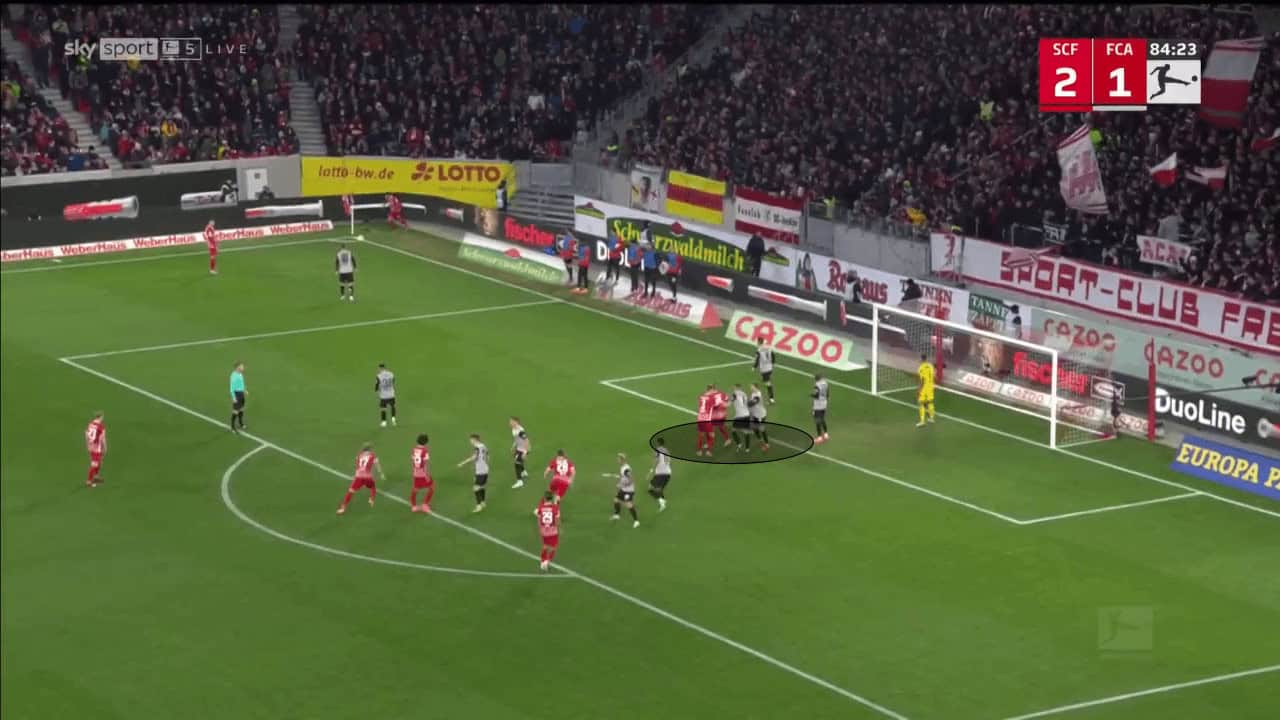
As a result, the red area highlighted below is open, where the attacker can attack the ball unopposed from just outside the six-yard box. Once the ball is delivered into the near side of the six-yard box, Freiburg players then have the option of either attempting to flick the corner towards goal or flicking it on for a second phase shot attempt.
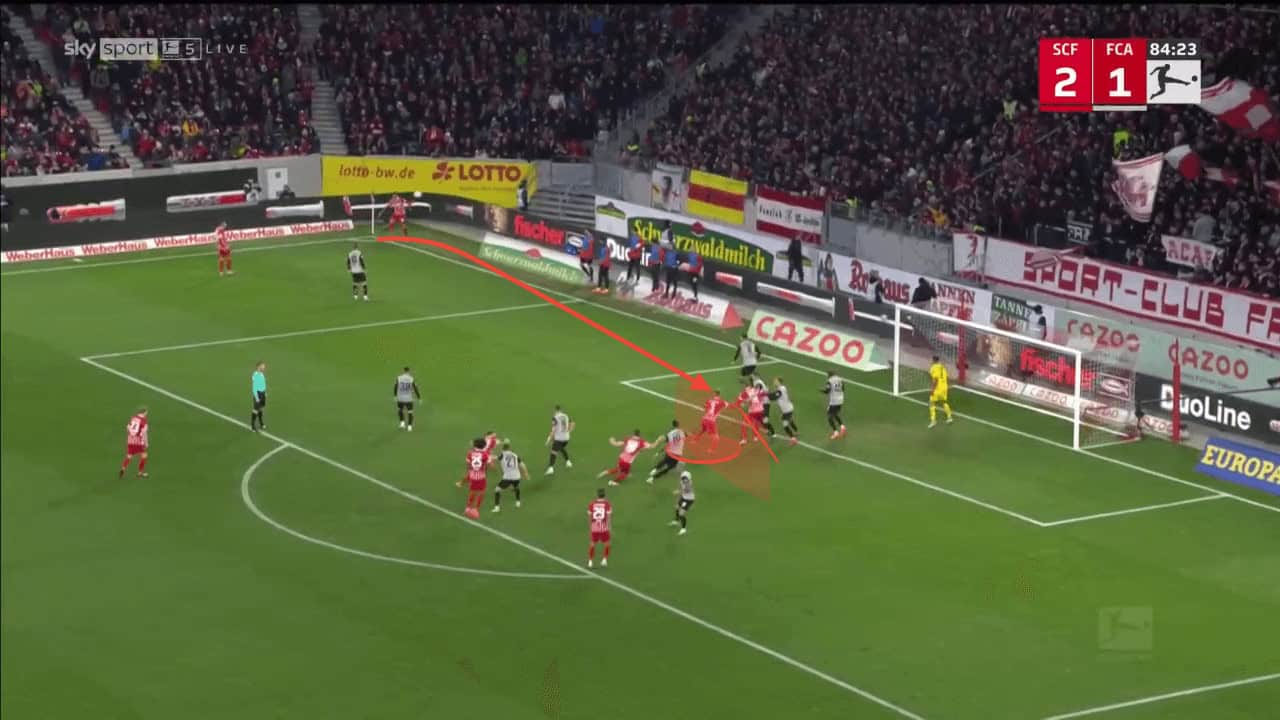
Creating chances at the back post
When the first contact is made after a deep horizontal run, it is much harder for an attacker to be able to redirect the header towards goal, so it is more likely for the ball to be redirected towards the back post.
When flicking the ball towards the back post, Freiburg have been able to adapt their strategies depending on the defensive setups. In the example below, the back post area is well covered by the defending team, so a flat flick-on would likely be cleared away. Freiburg adapt and overcome this through altering the direction of the flick on. Rather than making the flick-on flat, the flick becomes looped.
The extra height given to the ball almost makes the ball seem as if it has just been floated in directly from the corner, with the late flick making it harder for goalkeepers to claim the cross. Usually floated crosses are easier to claim for keepers, but this flick captures the essence of a floated cross while negating its biggest flaw.
After the ball is flicked upwards, a late run from deep is made to attack the ball at the back post. The run from deep, against static defenders (who have no time to attack the ball after it’s flicked) makes it extremely favourable for the Freiburg attackers to win the aerial duel. The ball almost drops onto the heads of the defending side, and with no run-up available, most players arriving from deep will be able to win the aerial duel.
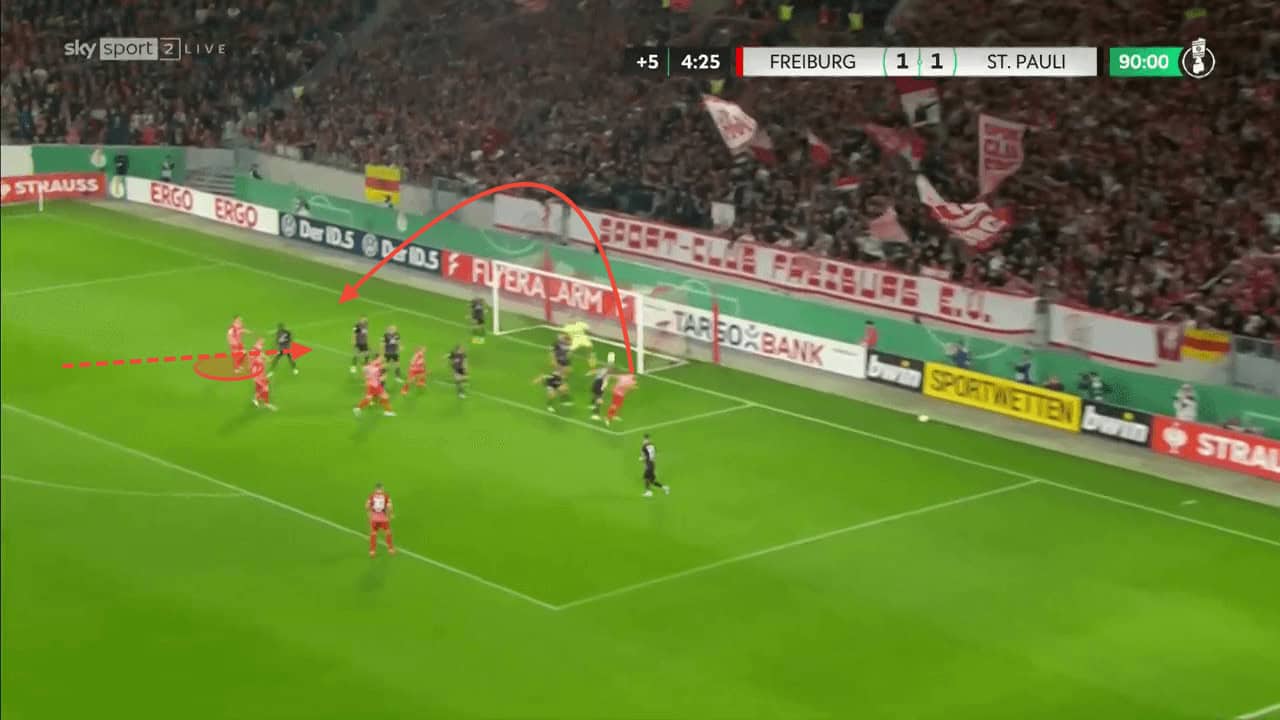
One way in which Freiburg have been able to create the space at the back post, for a flatter flick-on, is by overloading the defensive unit, with the sheer number of players being enough to manipulate the defender’s positions.
We can see in the image below, every Freiburg player moving towards the front side of the six-yard box which attracts every defender and leaves space at the back end of the six-yard box. As the ball is crossed in, one Freiburg attacker peels round to the back post, where they can meet the flick-on in time for a simple finish into the back of the empty goal.
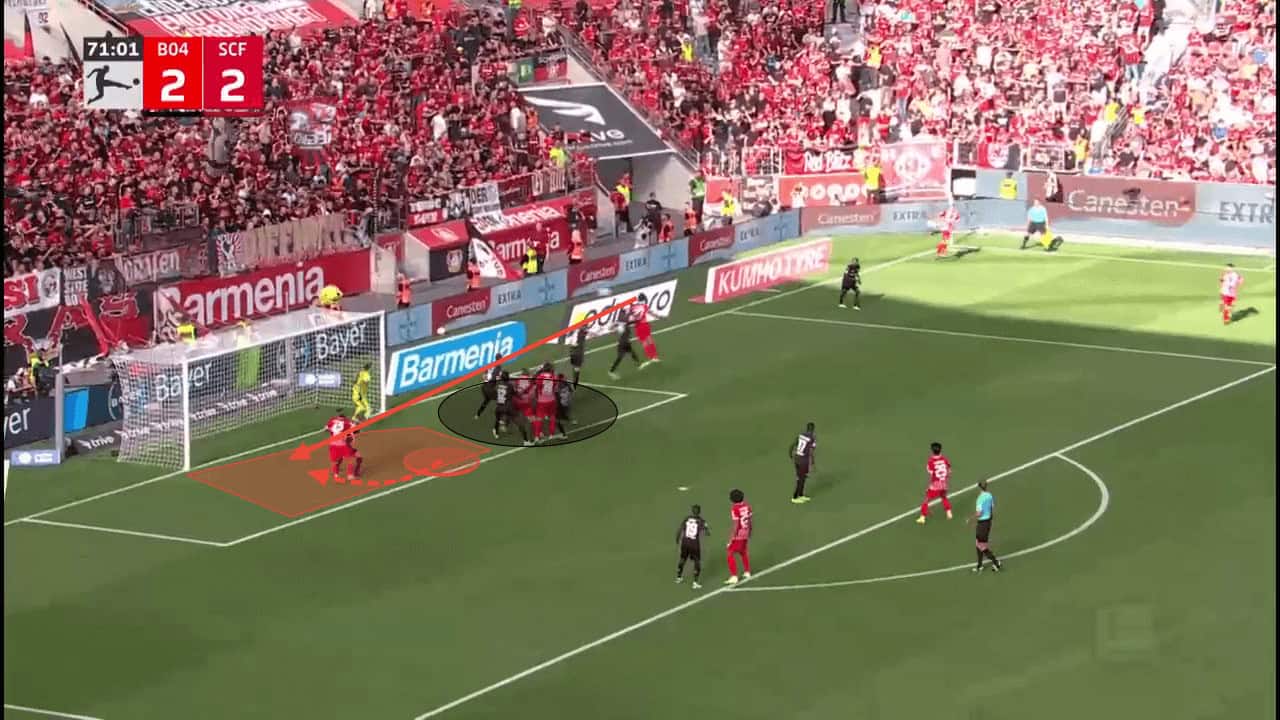
The final method Freiburg have use to be a threat from set-pieces is through their variations in corner taking where they target the back post directly.
As the season went on, teams became more aware of the threat Freiburg pose at the near post. As a result, more space is available at the back post. One way in which Freiburg have made sure there is space at the back post is through clustering in deep areas, where the large group of players beside each other acts as a big screen.
The image below shows four players from both attacking and defensive teams all located in close proximity to one another. Having such a big crowd together creates ‘traffic’ inside the penalty area. As a result, the Freiburg attacker is able to make his run around the cluster, while his marker either has to follow him around or move through the traffic. Both of these ways are too slow and give the attacker the separation he needs.
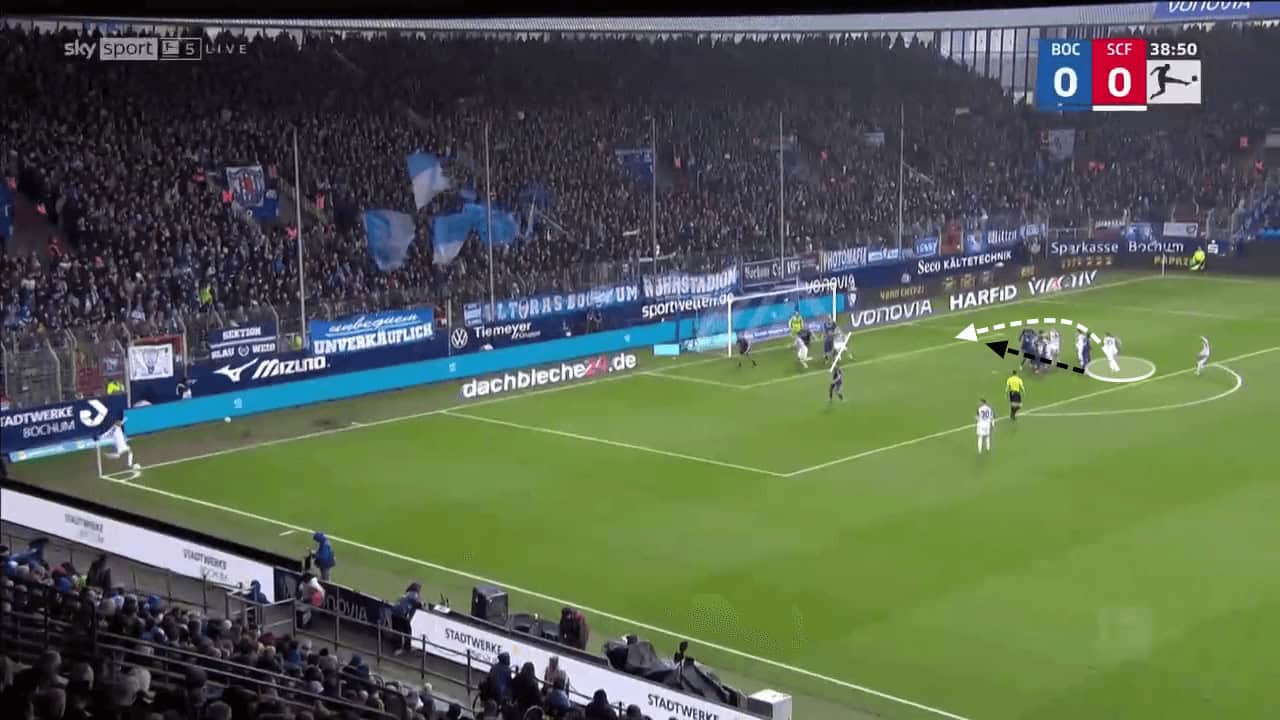
One final method of creating space at the back post is through the use of decoy runs. Pictured below, we can see the Freiburg attackers all attacking the near side of the six-yard box, whilst one player loops around to the back of the six-yard box. With the defending team expecting the flat cross, every defender makes the move early, which leaves lots of space at the back post for the ball to be delivered into.
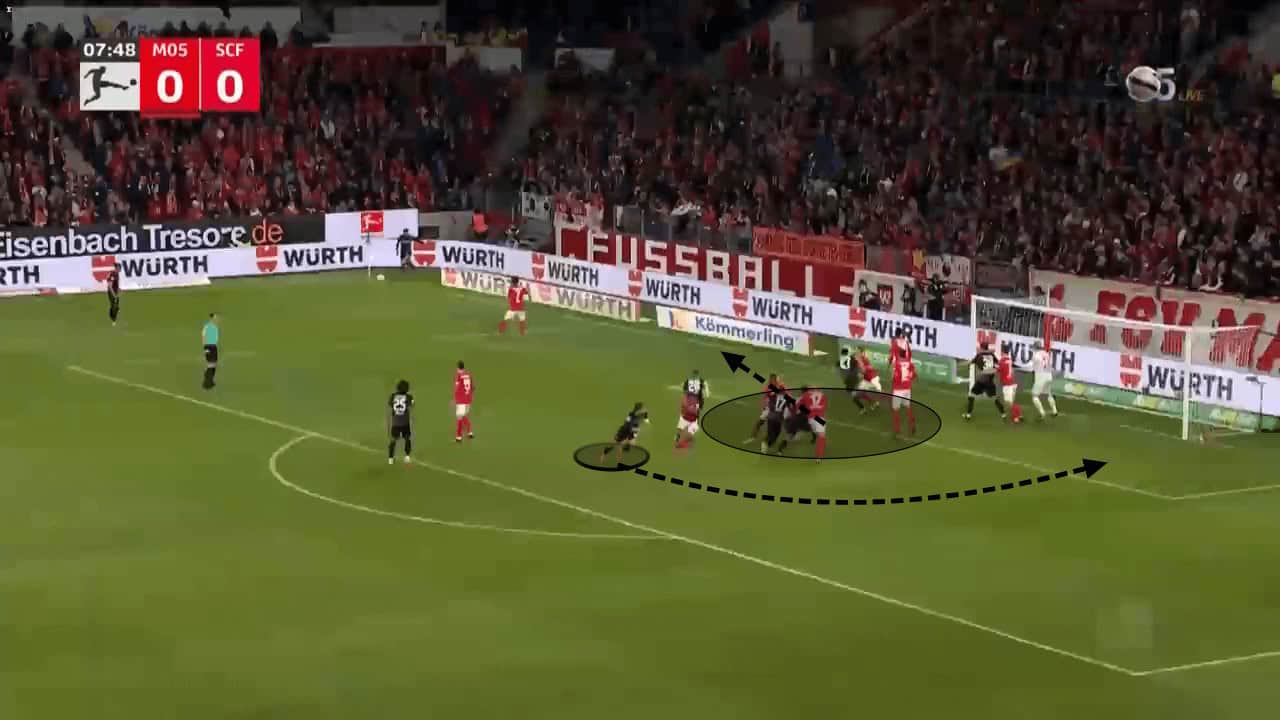
Summary
This tactical analysis has displayed the different methods Freiburg have used to become efficient from corners – the alternations between front and back post crosses, whilst also being adaptable by reacting to the set-up of the defensive teams.
Freiburg have continued to struggle for goals, but their continued threat from dead ball situations may just be enough to guide them to another European spot.






Comments